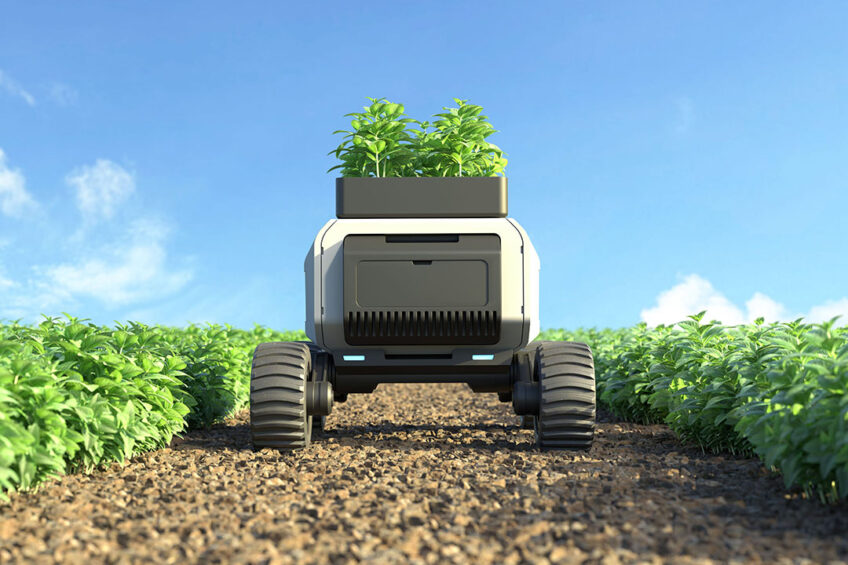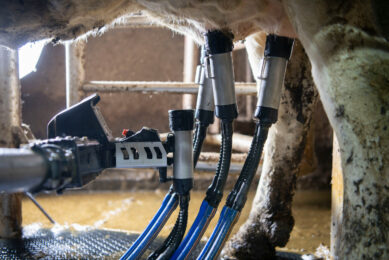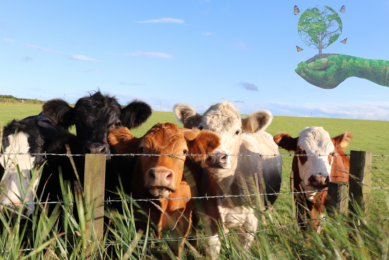Feed industry’s tech future: Lessons to be learnt from the healthcare sector

To ensure the sustainability of livestock farming in the future, animal feeding needs to be precise and effective. However, agriculture is the least digitised industry, but it has huge potential for improvement and workforce impact. What will this look like?
The feed industry could learn from healthcare, which has quickly adopted digital products that use a test-and-adapt approach to satisfy clients. Hospitals, care facilities, and even homes are using robots, the Internet of Things (IoT), and artificial intelligence (AI) every day. As agriculture undergoes its own tech transformation, the technological transformation of healthcare implies 2 trends for the feed industry: technology will not reduce the number of people working, but alter the type of work and leadership.
Agricultural robots
Robots transport up to 3,000 blood samples at a steady temperature at the Aalborg University Hospital, ensuring precise analysis and improved patient care. Robots are helping low and high-skilled workers with tasks from logistics to surgery assistance.
In a similar manner, agricultural robots from companies like Aigen and EcoRobotix are handling various tasks such as planting, weeding, insect vacuuming, harvesting, and packaging. These robots provide effective, accurate, and affordable solutions to problems in crop management and labour shortages, and their uses are likely to increase.
IOTs
IoT technology, smart devices like Fitbits and Apple Watches, are transforming our hospitals. Wearable health devices give doctors and consultants real time relevant data, saving bedside staff from constant monitoring.
The feed industry is also applying similar IoT uses. BinSentry, an agricultural IoT company, offers reliable inventory monitoring of on-farm feed bins using IoT sensors. This helps feedmills and vertical integrators to cut costs by improving operational efficiency. Similarly, Distynct replaces traditional technology with versions that have more data and functional capabilities at a similar cost, bringing the IoT to the farm in an affordable and manageable way.
IoT devices can quickly gather accurate agronomic data in one place for easier monitoring, which leads to precise resource allocation and enhances yield and sustainability.
Artificial intelligence (AI)
The healthcare industry loses over $2 billion annually and over 200,000 lives due to clinicians’ mistakes. AI can help prevent this. Errors caused by fatigue, memory, lack of experience or training and misapprehensions are significantly reduced when AI supports decision-making.
Farming has a lot of data, so artificial intelligence can detect patterns in the performance of animals and crop production systems. Companies like Ever.Ag give farmers real-time insights and data-driven recommendations. Companies like Partners for Production Agriculture help farmers make better decisions in real time based on market movements, with fewer mistakes. The use of AI computations and big data also allow farmers to deal with the complexity of weather, genetics, market turbulence and the microbiome of soil and the animals they feed.
Impact on labour
The animal feed industry is ready for a transformation. Farmers often choose employees and suppliers who have personal relationships with them for many years. Agriculture has been slower than most industries to embrace diversity in its workforce (not only in terms of sex, race and age, but also in terms of hiring people who do not have an agricultural background).
On the other hand, agriculture has always faced a “people problem” with job growth expected to increase only by 1%, due to poor pay and harsh conditions. But as Kincannon & Reed have pointed out in their recent publications, if technology replaces the jobs that labourers do not want to do and agribusinesses open their doors to more diversity, the opportunity will be for more stimulating, higher-paying work that attracts and retains a flexible workforce.
And as we have seen in hospitals, human labour is not being eliminated; the jobs that humans do have changed. In fact, medical jobs have a 19% job growth and will create more than 2.3 million jobs in the next few years – the best job outlook of any field.
Now, more than 50% of large farms and nearly a quarter of small farms are using (or planning to use) precision agriculture technology, according to a McKinsey survey. The demand for high-skill jobs in the feed industry will only grow. Future workers should be recruited based on new skills, such as data analysis, software engineering and coding.
How to prepare
As I mentioned in my book, The Future of Agriculture, education and training programs are effective ways to develop a workforce that evolves with each innovation. Companies like Ever.Ag and Partners for Production Agriculture empower agribusinesses from the top-down by offering innovative software solutions, evaluating risks, and seizing opportunities. Training and embracing diversity will create a more flexible workforce that can adapt to change throughout the company.
The animal feed industry has faced many challenges since its emergence almost 200 years ago, and they will not be solved using conventional thinking. We must welcome digital disruption. Technology on the farm provides solutions to many of agriculture’s most urgent problems, and those who prepare for disrupting innovation by investing and retaining talent will enjoy new levels of productivity and wealth.
At the end of the day, the businesses that will thrive in the tech transition are the ones investing and cultivating diversity and relevant skills now.











